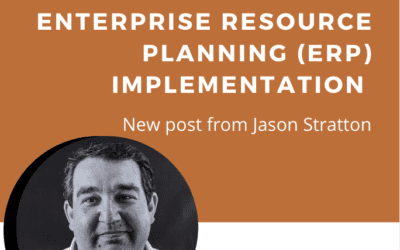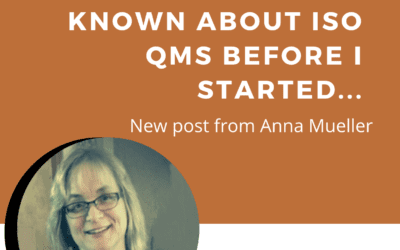Lean Manufacturing = Eliminating Waste
For several decades, manufacturers have been pursuing lean on their shop floor to reduce costs and improve lead times through waste elimination and process improvement. Identification and elimination of the 8 Wastes, reduction of non-value add activities, 5S workplaces, standard work, and continuous improvement have been the tools that have permitted successful lean implementers to survive and thrive in an increasingly competitive world. OMEP has assisted many clients in applying lean on the factory floor and in developing lean cultures, with incredible results – a 2015 study found that OMEP had delivered over $1B in direct economic impacts within Oregon through cost savings, job creation and increased sales since 2002.
Applying Lean Principles to Purchasing
Manufacturers have been less successful, however, in reaping lean’s potential benefits in their Purchasing, Planning and Supply Chain operations, areas that promise significant potential impacts.
Did you know that 50-60% of spend for the average manufacturing company occurs in their supply chain?
Raw materials, indirect materials, shop supplies, Purchasing & Planning salaries, office supplies, 3rd party services, transportation and logistics (including reverse logistic costs for rejects and returns), among others, contribute to this significant total of fixed and variable costs. Direct manufacturing costs, the traditional focus of lean activities, generally account for less than 25% of spend.
Did you also know that numerous studies have consistently found that the ROI for Purchasing organizations range from 1.1x at the low end to over 10x for top companies?
ROI in this case is defined as the total cost of the Purchasing function (salaries, benefits, supervision) divided into the financial impact delivered by the organization (cost savings, cost avoidances).
In other words, even the worst performing Purchasing organizations deliver positive returns to their companies, since every $1 saved anywhere on the P&L statement falls directly to the bottom line as $1 in profit.
Yet for many manufacturers, Purchasing, Planning and Supplier Management are shoe-string operations focused primarily on tactical activities. These can look like:
- Issuing purchase orders
- Expediting deliveries
- Resolving payment issues
- Addressing quality problems
- Finding new suppliers
Often, they are staffed by capable employees ‘promoted’ from other roles with minimal training and limited strategic responsibility. Further, these buyers often lack the bandwidth to do strategic work because they are so bogged down in day-to-day transactional work. How can manufacturers attack the large supply chain spend opportunities and improve the ROI of their materials team? Lean Purchasing, of course!
SUBSCRIBE to our Newsletter if you are enjoying this article!
How Lean Purchasing can improve your ROI
Uses parallel lean methods similar to shop floor improvement practices:
Identify Your Current State
All lean improvements begin by assessing the current state to identify existing capabilities and opportunities. Lean Purchasing considers Purchasing and Supply chain maturity, supply chain network visibility, supplier and supply risk management, spend segmentation, cost management, metrics, and process mapping to accurately define how a company’s supply chain organization functions today and uncovers opportunities for future improvement.
Create Your Future Vision
While the core of lean practice is continuous improvement, it is essential to know where the company *needs* its Purchasing and Supply Chain capabilities to be in the future. Ideally, the organization’s vision will be directly aligned with the company’s vision, defining the aspirational goals that will guide how (and when) the Purchasing organization will achieve essential goals and develop required capabilities.
Establish the Next Target Condition
Once a company has identified where they are today and where they aspire to be in the future, the next step is to determine the immediate goals, timelines and actions to begin moving forward toward the vision. These strategies are essential for employees throughout the company to know what’s important and to involve everyone in participating in and supporting the changes, and need to be established with a clear understanding of the supports and challenges to success within the organization.
Experimentation and One-degree Shifts
Continuous improvement is often described as a journey toward a destination (the vision), which is also true for Lean Purchasing. It’s critical for Purchasing and Materials teams to begin working immediately on projects and activities that move the entire organization toward the next target condition. At OMEP we talk about one-degree shifts – continuous small changes every day or week – and experiments that over time move functions and processes inevitably toward the long term vision. In Lean Purchasing, this encompasses buyer skills and training, simple visual material management systems, process improvements, systems utilization, development of standard work, and the overall elimination of low- and non-value added activities that prevent buyers from focusing on strategic activities and continuous improvement.
PDCA
The Plan-Do-Check-Act (PDCA) cycle is equally relevant for Purchasing and Supply Chain management organizations as it is on the shop floor. Team members and managers need to constantly assess the current state in contrast to the next target condition and challenge themselves to define and take action on the next experiment that will move the function forward. Set goals. Try changes. Evaluate the results. Make adjustments. Repeat.
If you assess your current state, create your future vision, establish your strategies and action plans, implement improvements to eliminate non-value-added activities, develop strategic capabilities, and then measure your progress, you’re well on the way to a healthy and thriving manufacturing company! These types of adjustments can increase profits and improve your competitiveness.





